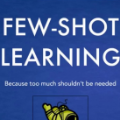In this paper, we propose a deep invertible hybrid model which integrates discriminative and generative learning at a latent space level for semi-supervised few-shot classification. Various tasks for classifying new species from image data can be modeled as a semi-supervised few-shot classification, which assumes a labeled and unlabeled training examples and a small support set of the target classes. Predicting target classes with a few support examples per class makes the learning task difficult for existing semi-supervised classification methods, including selftraining, which iteratively estimates class labels of unlabeled training examples to learn a classifier for the training classes. To exploit unlabeled training examples effectively, we adopt as the objective function the composite likelihood, which integrates discriminative and generative learning and suits better with deep neural networks than the parameter coupling prior, the other popular integrated learning approach. In our proposed model, the discriminative and generative models are respectively Prototypical Networks, which have shown excellent performance in various kinds of few-shot learning, and Normalizing Flow a deep invertible model which returns the exact marginal likelihood unlike the other three major methods, i.e., VAE, GAN, and autoregressive model. Our main originality lies in our integration of these components at a latent space level, which is effective in preventing overfitting. Experiments using mini-ImageNet and VGG-Face datasets show that our method outperforms selftraining based Prototypical Networks.
翻译:在本文中,我们提出一个深层次、不可忽略的混合模型,将潜在空间层次的歧视性和基因性学习纳入半监督的微小分类。从图像数据中将新物种分类的各种任务可以模拟成半监督的微小分类,这种分类假设有标签和未贴标签的培训范例,以及目标班的少量支助组合。预测目标班,每班几个支助范例,使现有的半监督分类方法难以完成学习任务,包括自我培训,这种培训反复估计未贴标签的培训范例的类标签,以学习培训班的分类。为了有效地利用未贴标签的培训范例,我们采用了将非标签和基因性学习作为目标功能,将这种可能性作为半监督的分类模型,将区别性和基因性学习与深层的内观网络更好地结合起来,而不是在之前的参数组合中,其他受欢迎的综合学习方法,在我们提议的模型中,歧视性和基因化模型分别显示各种微小的学习成绩,以及标准化的流出一个深层次的可倒置模型,在我们的原始的轨道上,在原始的轨道上,我们的主要轨道上, 展示了一种原始的模型。





